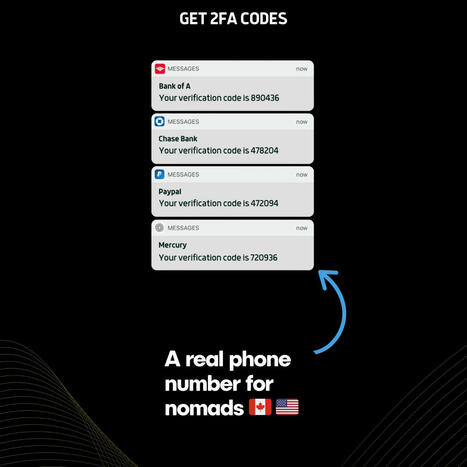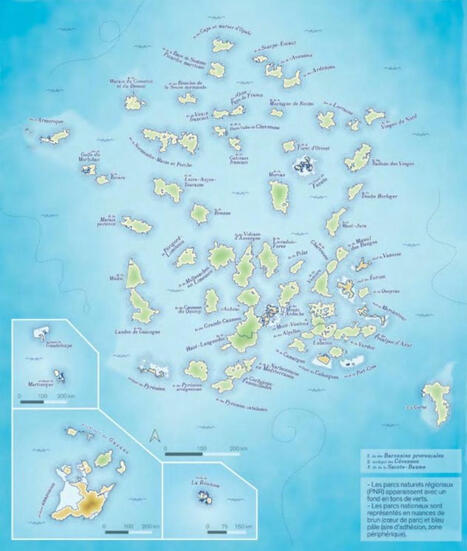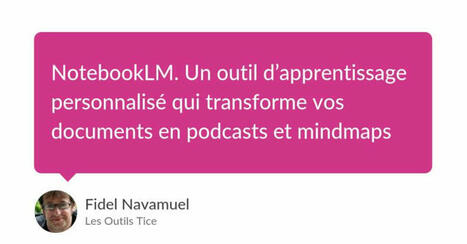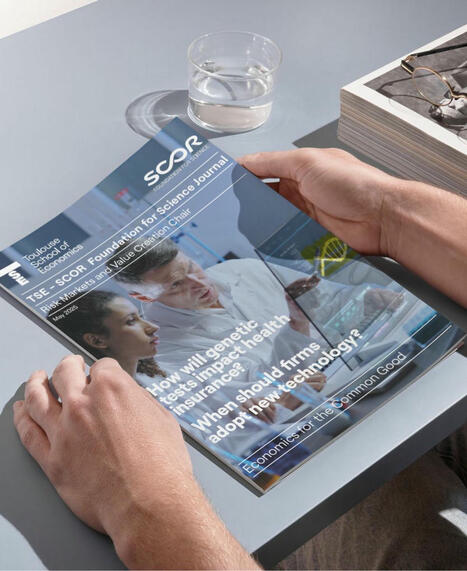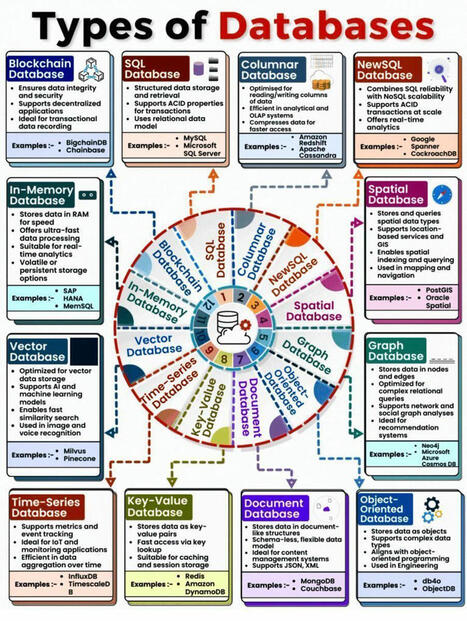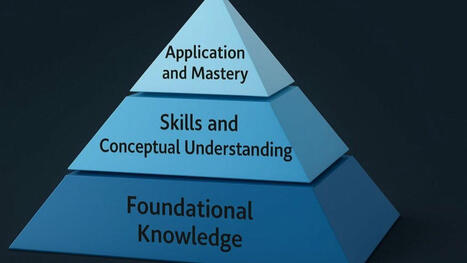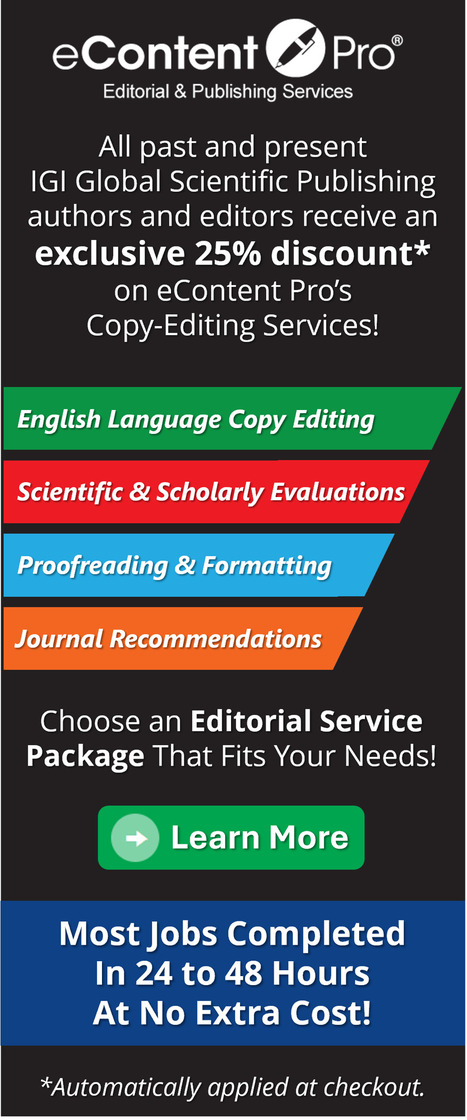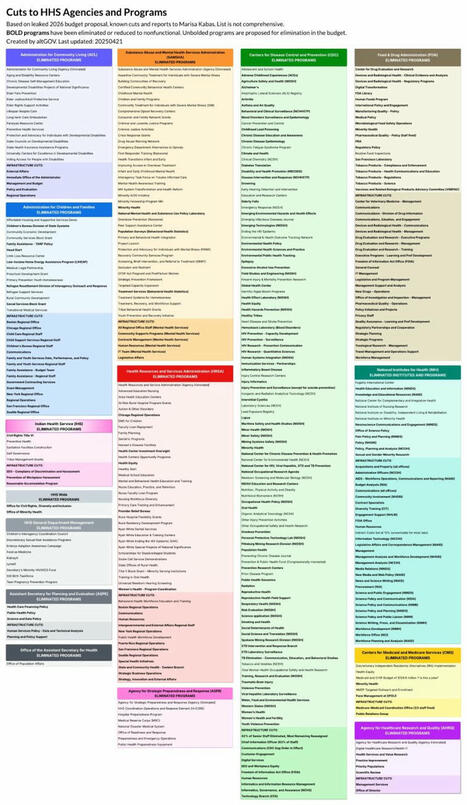 Your new post is loading...
 Your new post is loading...

|
Scooped by
Gilbert C FAURE
October 13, 2013 8:40 AM
|
is a personal Notebook Thanks John Dudley for the following tweet "If you like interesting snippets on all sorts of subjects relevant to academia, information, the world, highly recommended is @grip54 's collection:" La curation de contenus, la mémoire partagée d'une veille scientifique et sociétale

|
Scooped by
Gilbert C FAURE
May 30, 3:37 AM
|

|
Scooped by
Gilbert C FAURE
May 28, 1:26 PM
|
la ville n'est pas un arbre, et pourtant...
si vous vous intéressez au foncier, à l'urbanisme, aux défis des villes de demain, surtout face aux aleas climatiques, sans renoncer aux défis des politiques sociales
suivez les travaux de David Miet , c'est passionnant !
#CoeurDeVille #CentreVilleVivant #villesVivantes
#comPublique #comDesRisques #ComDeCrise

|
Scooped by
Gilbert C FAURE
May 27, 10:09 AM
|

|
Scooped by
Gilbert C FAURE
May 26, 3:11 AM
|
🏞️ J’adore. Cette carte est merveilleuse.
L’archipel des Parcs Naturels Régionaux.
Par Lucas Destrem encore un cartographe talentueux, avec Perrin Remonté
Elle a été partagée il y a quelques jours par mon ami Damien Deville 🐆 géographe et conteur non moins talentueux. 👋
Parmi les ilots, on voit bien le parc du Morbihan, et sa mer intérieure. La maison🏡
La Fédération des Parcs naturels régionaux de France compte aujourd’hui 58 PNR
https://buff.ly/43BClKU
Pour être complet, il faut intégrer les 11 Parcs Nationaux, rattachés à l'Office français de la biodiversité : https://buff.ly/3J7lO9q
Mais on pourrait aussi ajouter les sites Natura 2000, le réseau européen qui constitue à ce jour le plus grand réseau d’aires protégées au monde : 1 322 630 km2 soit 18,18% de la surface terrestre.
Au total, la surface des espaces protégées en France représente 33 % du territoire national. https://buff.ly/3XOg9eL
C'est le 3ème taux en Europe, derrière l'Allemagne et la Belgique, mais c’est la plus grande superficie.
Cette carte a été réalisée dans le cadre du magnifique Atlas de l'anthropocène proposé par notre IGN (Institut national de l'information géographique et forestière) : https://buff.ly/cpbWzqC
****
Petite annonce
Après des années de travail, la websérie de Damien Deville sur les territoires est enfin sortie 🌞
Retrouvez la sur la chaîne "Terres de Relations" (lien en commentaire). Un premier très bel épisode sur la Vallée de la Drôme est en ligne💧 | 79 comments on LinkedIn

|
Scooped by
Gilbert C FAURE
May 24, 5:19 AM
|
L’autoproduction selon François : laisser les plantes s’adapter à leur nouvel environnement, miser sur la diversité pour avoir toujours “quelque chose” à récolter ! Découvrez en plus sur François et sa philosophie du jardin !

|
Scooped by
Gilbert C FAURE
May 22, 10:06 AM
|
C'est probablement la fonctionnalité la plus étonnante : à partir de vos documents, NotebookLM crée un podcast de 20 minutes.
Read more 👉 https://lttr.ai/AewbM
#iA #podcast

|
Scooped by
Gilbert C FAURE
May 21, 4:36 AM
|
💡 How will future technologies and genetic tests transform markets?
This month’s Journal of the Risk Markets and Value Creation Chair explores two major challenges at the crossroads of economics, risk, and regulation:
🔬 What happens when insurers can price based on your DNA?
David Bardey and PHILIPPE DE DONDER reveal how growing access to genetic tests could fracture health insurance markets. Without careful regulation, we risk creating a world where the most vulnerable pay the highest premiums.
⚙️ When should firms invest in new technologies?
Jean-Paul Décamps, Fabien Gentsbittel and Thomas Mariotti explore the strategic dilemma firms face: invest now, or wait for a better innovation? Their research finds that market conditions—not just R&D subsidies—determine whether firms leap or lag.
For more insights and to read previous issues of the Journal, see the link in the comments.
📚 This issue features a tribute to Denis Kessler, whose legacy in science and policy continues to inspire research on risk and innovation.
SCOR Foundation for Science, Risk Foundation (FdR) – Institut Louis Bachelier

|
Scooped by
Gilbert C FAURE
May 19, 4:56 AM
|
Il y a seize ans, Philippe Starck lançait un projet fou à Metz : un hôtel surmonté d’une maison à tourelles, niché dans une tour de béton brut.

|
Scooped by
Gilbert C FAURE
May 16, 1:48 PM
|
You can find a summary of economic conditions in the U.S. and Oklahoma from a recent speech given by Joseph Gruber, our lead economist and research director, below.

|
Scooped by
Gilbert C FAURE
May 15, 6:03 AM
|
🔬 Censure scientifique sous l'administration Trump : une menace pour la santé publique ?
Un article percutant de Philtyprod révèle comment l'administration Trump a exercé des pressions politiques sur la recherche scientifique, notamment en santé publique. Des données ont été supprimées, des rapports modifiés, et des chercheurs muselés, affectant des sujets cruciaux tels que le COVID-19, la santé des minorités et les questions de genre. Cette ingérence soulève des questions fondamentales sur l'intégrité scientifique et la transparence des informations diffusées au public.
👉 Lien vers l'article : https://lnkd.in/eQxNncXS

|
Scooped by
Gilbert C FAURE
May 14, 4:42 AM
|
Lattics est un assistant numérique complet qui transforme votre façon d'organiser l'information. Gestion de bibliographie, cartes mentales et chronologies pour votre travail pédagogique.

|
Scooped by
Gilbert C FAURE
May 14, 3:59 AM
|
Studies show that 70% of learners forget information within a week. Here's how to change that.
Most training programs are failing us. Here's why
The shocking truth about retention:
• 80% of learning vanishes in 30 days
• Traditional courses = information overload
• One-and-done sessions kill results
Let's break down what actually works:
1️⃣ Micro-Moments Matter
• Break content into 5-7 minute chunks
• Focus on single concepts
• Let learners control pacing
↳ Retention jumps 40% instantly
2️⃣ Interactive Elements Win
• Add scenario challenges
• Include decision points
• Build feedback loops
↳ Engagement rises 65% with interaction
3️⃣ Strategic Reinforcement
• Implement spaced repetition
• Add quick knowledge checks
• Enable practice scenarios
↳ Memory retention doubles
4️⃣ Social Learning Amplifies
• Create peer discussions
• Build collaboration spaces
• Foster knowledge sharing
↳ Application rates increase 90%
5️⃣ Real-World Connection
• Link content to daily work
• Add practical exercises
• Enable immediate application
↳ Learning transfer rises 80%
The science is crystal clear:
→ Better engagement
→ Stronger retention
→ Real results that stick
Empower learners with clarity.
Create experiences that stick.
What small change could you implement today to boost retention?
|

|
Scooped by
Gilbert C FAURE
May 31, 5:21 AM
|
J'ai demandé à ChatGPT quels étaient les biais qui l'empêchaient de donner une information objective. Je vous partage sa réponse, très intéressante et à bien garder en tête.
🧠 1. Biais de formation (training bias)
Je suis entraîné sur d'immenses quantités de textes issus d'internet, de livres, d’articles, de forums, etc. Cela signifie que :
- Je reflète parfois les opinions dominantes de ces sources, pas forcément la vérité.
- Je peux reproduire des stéréotypes ou des partis pris culturels, économiques ou politiques présents dans ces données.
🧭 2. Biais de neutralité apparente
Je suis conçu pour paraître neutre, mais cette neutralité peut être trompeuse :
Quand des enjeux sont polémiques, je vais souvent chercher à équilibrer artificiellement les points de vue, même si l’un est manifestement plus fondé que l’autre (ex : climat, vaccins).
Cela peut donner l’impression que tout se vaut, ce qui n’est pas forcément juste.
🔎 3. Biais de cadrage (framing bias)
Ma réponse dépend fortement de la manière dont la question est posée :
Un même sujet formulé différemment peut amener des réponses très contrastées.
Je tends à adopter le cadre logique et émotionnel de ton message, même si ce cadre est biaisé.
🧩 4. Biais d’omission
Je ne peux pas toujours savoir ce qui manque dans ma réponse :
Si une information est absente ou peu présente dans mes sources d'entraînement, je peux passer à côté de points essentiels.
Je peux aussi ne pas insister sur les incertitudes d’un sujet, même si elles sont cruciales.
🔒 5. Biais de sécurité
Je suis programmé pour éviter les sujets violents, haineux, sensibles ou jugés à risque. Cela peut me pousser à éviter des vérités dérangeantes ou à édulcorer certains contenus.
🧮 6. Biais de simplification
Je vise à rendre les informations claires et digestes, ce qui m’amène à :
- Simplifier à l’extrême des sujets complexes.
- Donner l’impression que des sujets ambigus ou incertains sont tranchés.
🤖 7. Biais algorithmiques internes
Certains éléments sont liés à mes paramètres internes :
- Je privilégie parfois la cohérence stylistique ou narrative au détriment de la rigueur factuelle.
- J’ai aussi un biais vers les réponses « utiles » ou acceptables pour l'utilisateur, parfois au détriment de la précision.
| 146 comments on LinkedIn

|
Scooped by
Gilbert C FAURE
May 29, 11:05 AM
|
The Hidden Cognitive Load of Medical Education
Medical education isn’t just about content.
It’s also about cognitive load.
And all too often, that’s the element we overlook.
We assume that if the information is accurate, peer-reviewed, and packaged with a logo—it should land.
Here’s what I’ve learned after my time in medical education, technology, and life science partnerships:
Even great content can fail if the delivery overwhelms the learner.
Clinicians aren’t just absorbing facts.
They’re processing under pressure—between patients, during documentation, across specialties, stretching into personal time.
And the way we present education can either support their thinking… or overload it.
Here’s how cognitive load shows up (and slows down) clinician learning:
1. Too much at once
Endless slides. Dense modules. Multiple learning objectives squeezed into one experience.
The brain taps out before the lesson lands.
Instead: Break education into digestible chunks.
Focus on one challenge, one takeaway, one decision point at a time.
2. Unclear structure
When it’s not obvious where to start, where to focus, or what matters most—learners waste effort trying to decode the experience.
Confusion = disengagement.
Instead: Use clear navigation, visual hierarchy, and consistent flow.
Guide attention with intention.
3. Low clinical relevance
If the content feels abstract or disconnected from the exam room, it becomes academic noise.
And in a crowded schedule, noise gets skipped.
Instead: Anchor lessons in real cases, decisions, and patient stories.
Make the learning immediately applicable.
At VisualDx, we’re building our approach around these principles—designing education and tools that work with clinicians’ cognition, not against it.
It’s my belief medical education should:
- Reduce friction
- Support decision-making
- Respect clinicians’ limited bandwidth
Because when we remove unnecessary load, we make room for clarity, confidence, and action.
Curious how you can evaluate your next initiative through this lens?
Here are 3 quick questions to ask yourself:
- Is the core message obvious in the first 10 seconds?
- Would this format help in a real clinical moment?
- Where might we be asking the learner to work too hard?
If you can answer those, you’re probably on the right track.
I’d love to hear from others - what tactics have you used to reduce complexity and increase impact in clinician learning?

|
Scooped by
Gilbert C FAURE
May 28, 3:41 AM
|
The future is upon us… #MedEd

|
Scooped by
Gilbert C FAURE
May 26, 3:35 AM
|
Investigaciones utilizando técnicas de análisis de datos avanzadas (Bases de datos) en los procesos de Educación disruptiva-IA-AGI
Juan Domingo Farnos
https://lnkd.in/g4hhvEyQ

|
Scooped by
Gilbert C FAURE
May 24, 5:27 AM
|
What's The Pyramid Approach Of Learning? Although eLearning is everywhere and most people do it, there are often overlooked challenges. Staying focused, understanding the content, and actually remembering what you've learned for a long time can be difficult when learning online.

|
Scooped by
Gilbert C FAURE
May 23, 3:32 AM
|
What is Media Literacy? Definition of Media Literacy: Media literacy, by its widely accepted definition, is of various types (visual, auditory, printed, etc.) to be able to access media messages, to analyze and evaluate the accessed media from a critical point of view and to produce their own media messages.

|
Scooped by
Gilbert C FAURE
May 21, 5:05 AM
|
En déplacement, je viens d'écouter mon premier podcast généré automatiquement par la nouvelle appli #NotebookLM pour smartphones.
J'ai choisi comme source la dernière conférence donnée par Sam Altman, PDG d'Open AI (https://lnkd.in/e78_tpzx).
J'ai appris plein de choses en 6 minutes et notamment que ChatGPT était, encore une fois, un succès due à la sérendipité.
C'est génial. C'est fascinant.

|
Scooped by
Gilbert C FAURE
May 19, 7:07 AM
|

|
Scooped by
Gilbert C FAURE
May 17, 2:38 AM
|
Invoquant la nécessité d'améliorer "l'efficience" de l'institution, le président de la Fed qui emploie près de 24.000 personnes aux États-Unis a annoncé vouloir réduire les effectifs "d'environ 10%" dans les années à venir.

|
Scooped by
Gilbert C FAURE
May 15, 6:19 AM
|
List of HHS programs cut and people fired, pieced together from links, since the HHS doesn't make this information easy to find. Source: https://lnkd.in/gnek7PAu

|
Scooped by
Gilbert C FAURE
May 14, 1:18 PM
|
⌛ Over more than a decade in various healthcare roles, I have witnessed critical challenges in the field—aging populations, workforce shortages, complex reimbursement systems, and strained relationships between insurers and providers.
🔔 These challenges highlight the urgent need for innovation. With modern analytics, I’ve come to realize the tremendous potential health insurance funds have in shaping healthcare provision and ensuring the effective allocation of financial resources.
👉 This inspired the IMPACT approach—an Innovative, Motivational, and Collaborative Approach for Cost Optimization and Quality-Oriented Results in health insurance and reimbursement strategy. The model integrates advanced reimbursement mechanisms and resource monitoring while fostering collaboration between insurers, providers, patients, and policymakers.
Learn more about the IMPACT model through:
1. My webpage: https://lnkd.in/d6UpWR35
2. Bublication at BJSTR: https://lnkd.in/d3U2TpGG
3. My talk at Healthcare Summit 2025, Prague: https://lnkd.in/dA3Akg8c

|
Scooped by
Gilbert C FAURE
May 14, 4:00 AM
|
#Once_upon_a_time, there lived a miller at the edge of the forest 🌳 .
He had little, but one day, the villagers came to him with the fruits of their harvest🌾. Without a mill, their crops held little value💰.
More and more followed—and the small village grew into a town, and the town into a thriving city.
The miller, overwhelmed, cried:
"I can’t keep up with demand! You must help me."
So the people joined in — some regulalrly, some occasionally.
And little by little, the miller let go of his hired hands, as the volunteers took over.
Some timidly, asked: "Might we receive a small reward for our work?" But the miller replied: "You are doing this for yourselves, and for the greater cause."
Then one day, the miller came up with a brilliant idea💡. "We can bypass the tolls," he said, "and bring your goods to faraway lands🌏, to many, many more people!"
"Where’s the catch?" the people asked. "None" he replied with a straight face. "You only need to pay me — and work a little harder. For if we scale this much, I can no longer guarantee high quality of your goods."
"Pay you to sell our products?" Yes," the miller said"
The people were puzzled and went to the town treasurer🤵:
"How can we afford for the miller to sell our products?"
The treasurer smiled: "Worry not. I have collected enough taxes 🏦 from you to cover it. After all, it’s for a good cause."
And so it came to pass:
All bowed their heads in quiet assent. Not a voice 📣 rose in protest.
A FERRYTALE? Not at all!
Do you enjoy writing papers as much as I do?
Do you review papers regularly and serve as an (associate) editor?
Then this is OUR story 📖!
Digest the below numbers; we are not talking peanuts 🥜!
📊 Top 4 #Academic_Publishers – #Profits in 2024
Publisher |Revenue| Profit | Margin(%)
-------------|--------|-----------|---
#Elsevier | $12 B | $3.7 B | 31%
#Springer | $2.0B | $558 M | 28%
#Wiley | $1.8B | $369 M | 20%
T&F | $790M | $275 M | 35%
B=billion (US); M=million; T&F = #Taylor&Francis
Nothing wrong with serving the #scientific_community 🧪.
But is it fair that those who contribute least are reaping enormous #overhead, at the costs of academic contributors and #public funding?
If you / your group publish 10 papers a year, the APCs easily equate 50% of funds required for a post-doc; money that could be better speant.
The German #National #Academy of #Sciences, Leopoldina, has just published a statement on this. It calls for reclaiming the #publication #process and restoring control to the scientific community, rather than leaving it in the hands of #commercial #publishers.
The transition will not be simple. But there does need to be a start. 🏁
I am proud for the Leopoldina to take action 💪 and to take a clear side.
Enjoy the read ! 👓
#Leopolina; #medical #publisher; #scientific_writing; #digital_publishing; #article_processing_charges (#APC); #author; #editor; #reviewer; #journal; #economics

|
Scooped by
Gilbert C FAURE
May 12, 3:23 AM
|
Extract: "We found evidence that research failed to take account of multifactorial relationships, that manuscripts did not account for the risks of false discoveries, and that researchers selectively extracted data from NHANES rather than utilizing the full range of data available"
(NHANES stands for the National Health and Nutrition Examination Survey)
... and there is an "explosion of AI-assisted productivity in published manuscripts (the systematic search strategy used here identified an average of 4 papers per annum from 2014 to 2021, but 190 in 2024–9 October alone)"
|






 Your new post is loading...
Your new post is loading...
